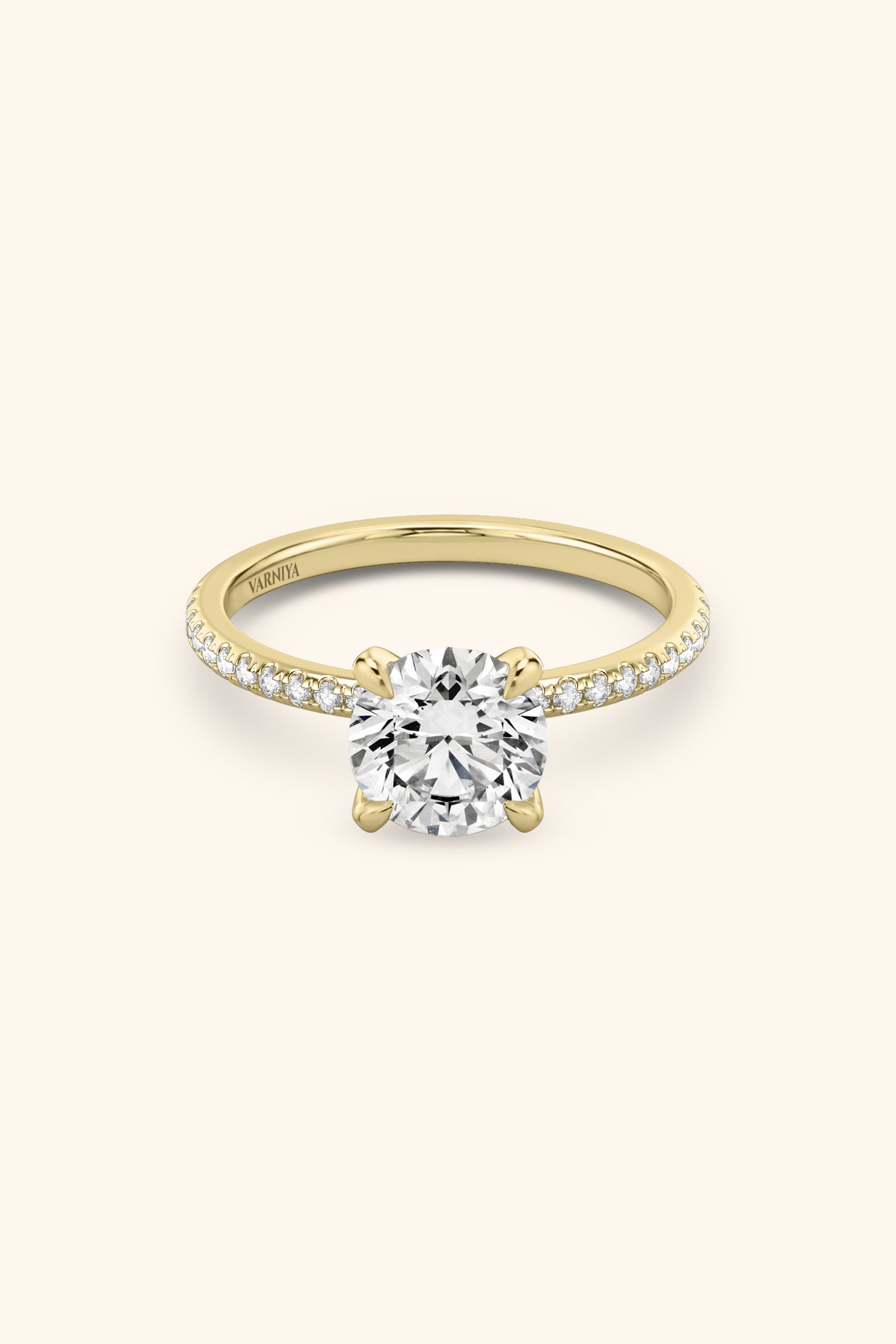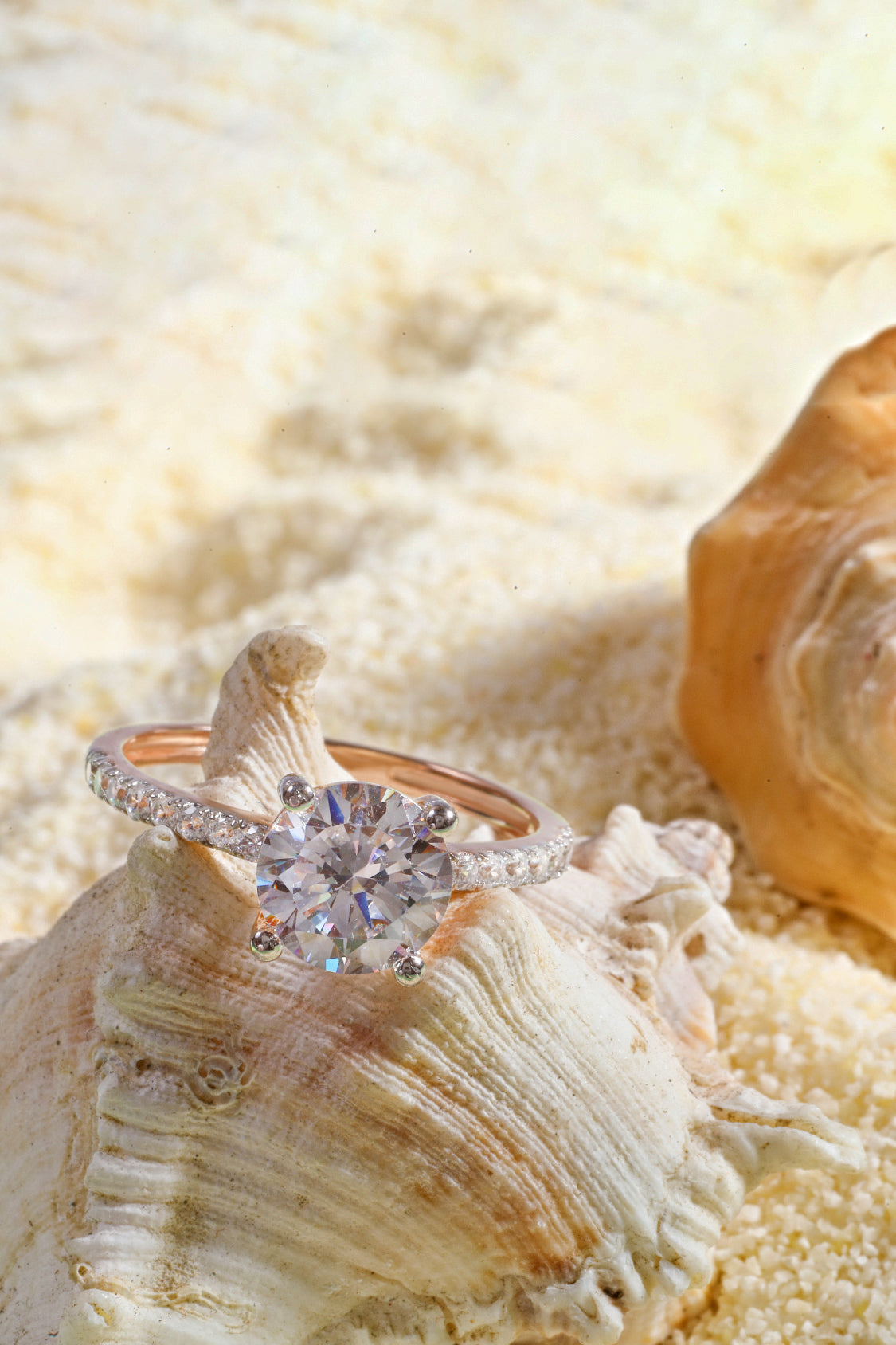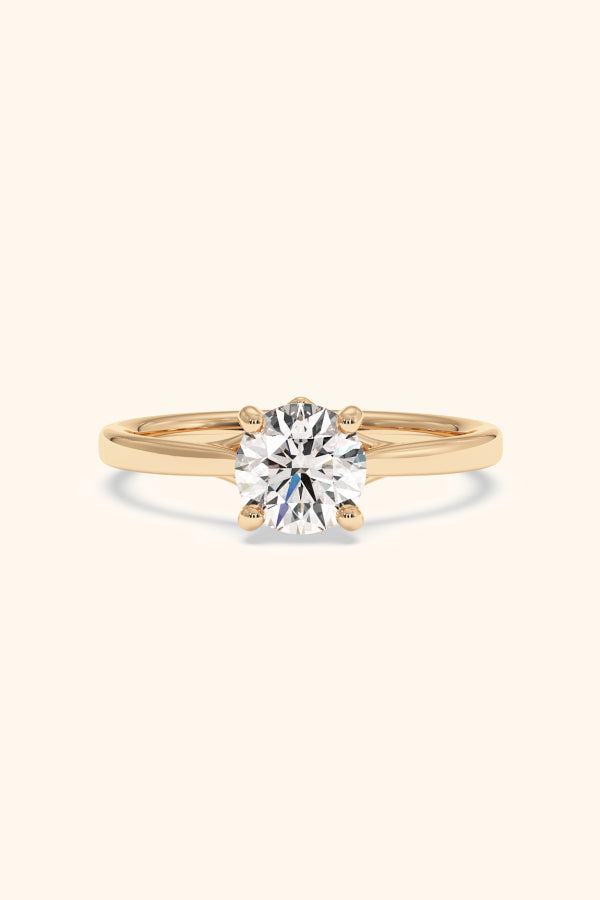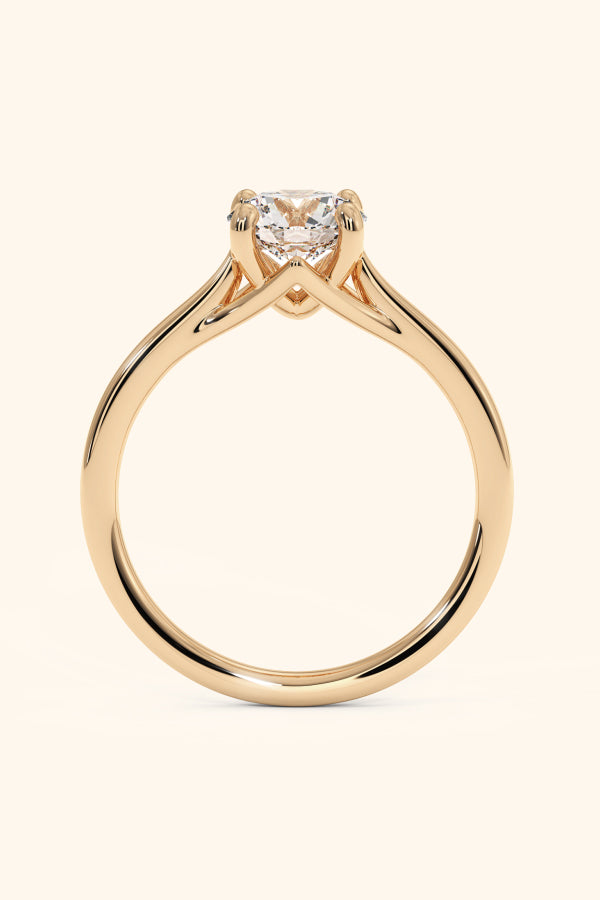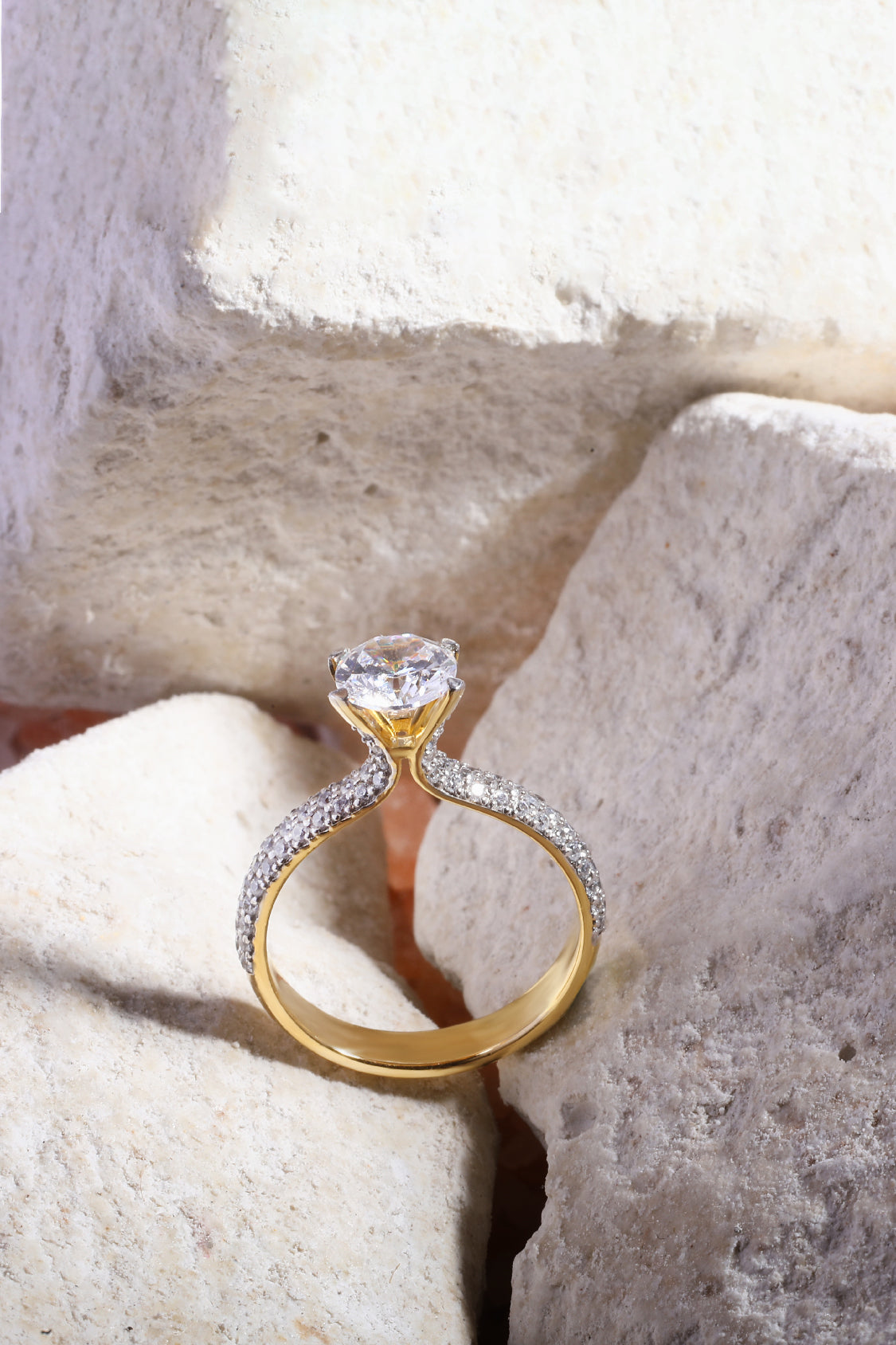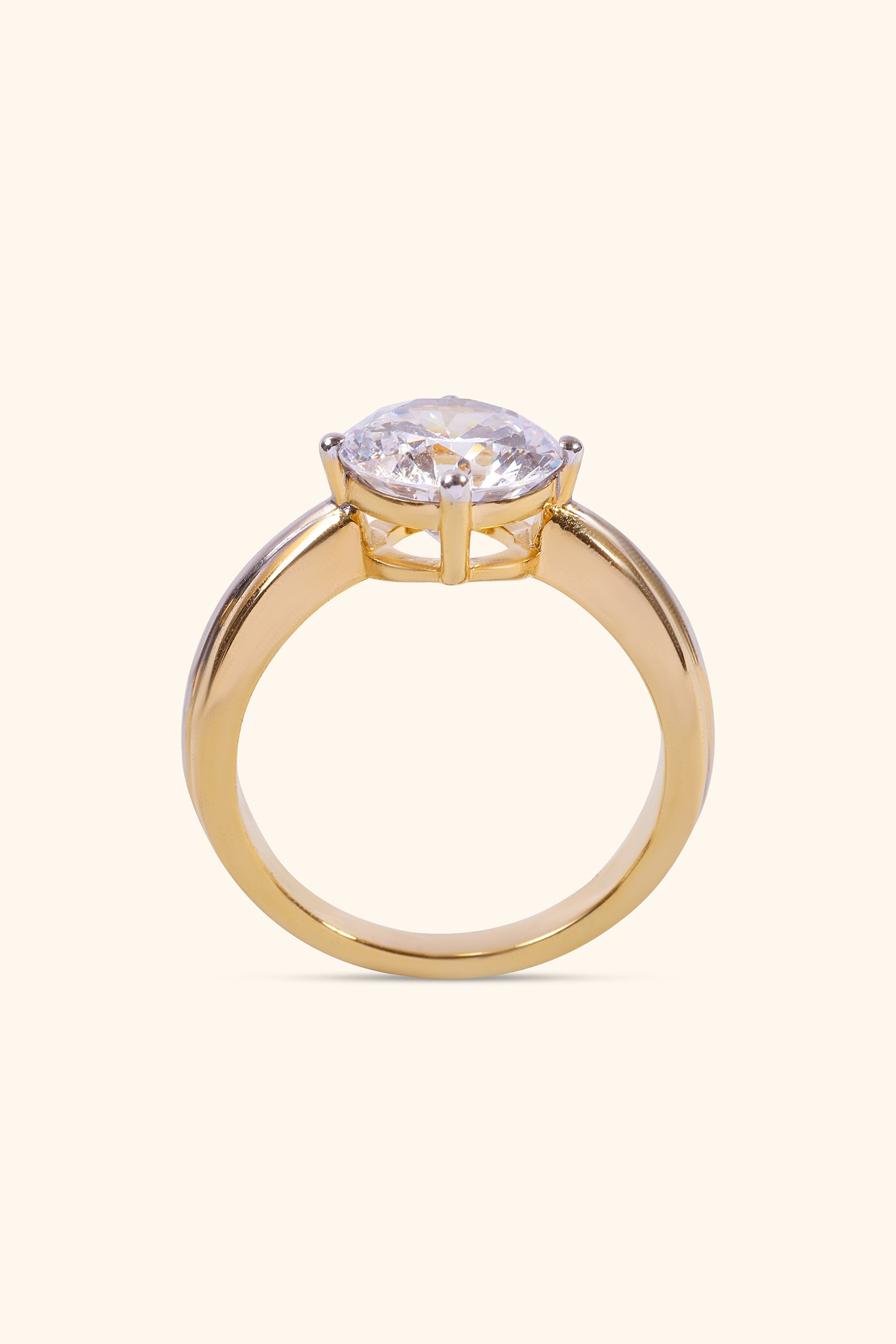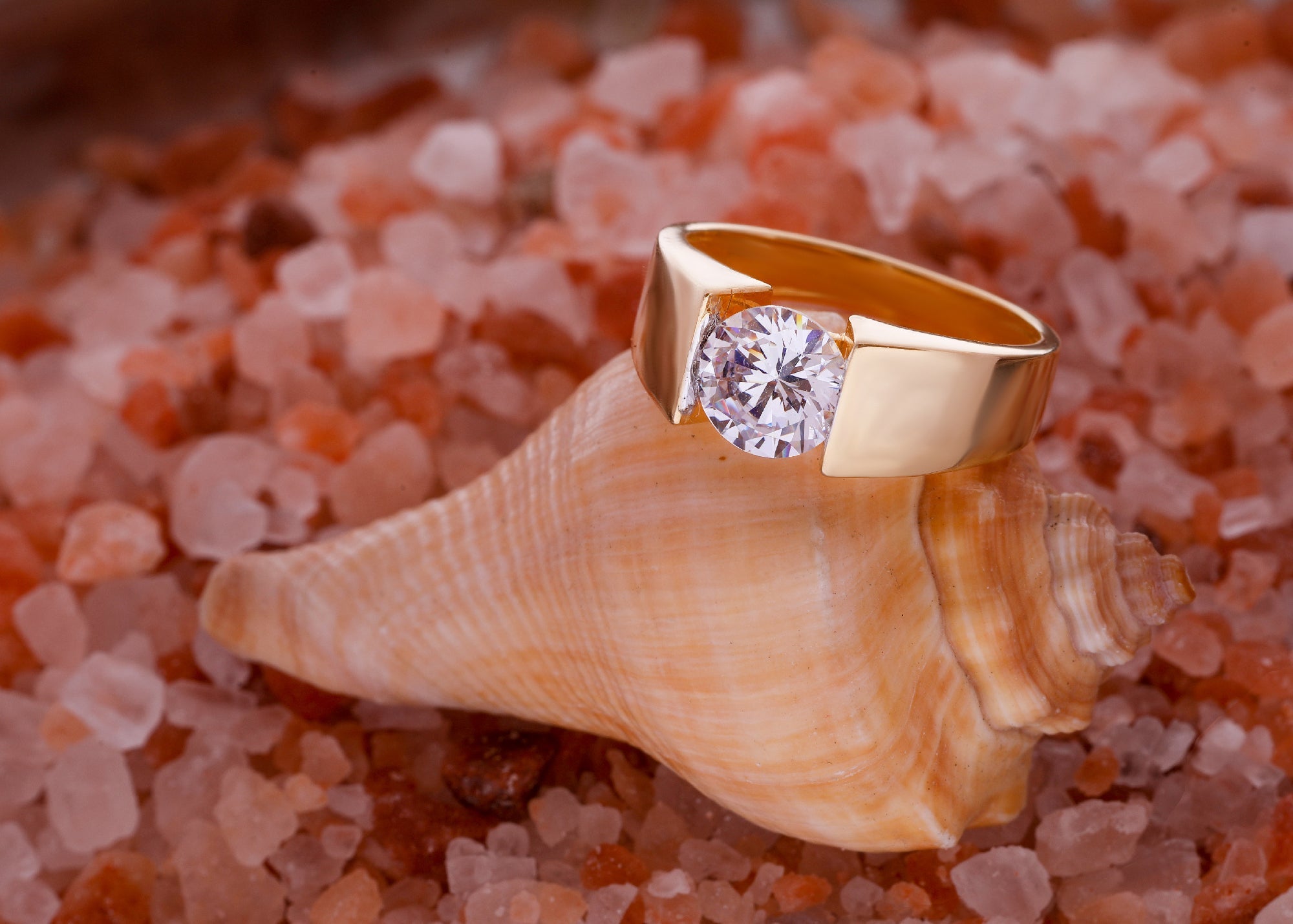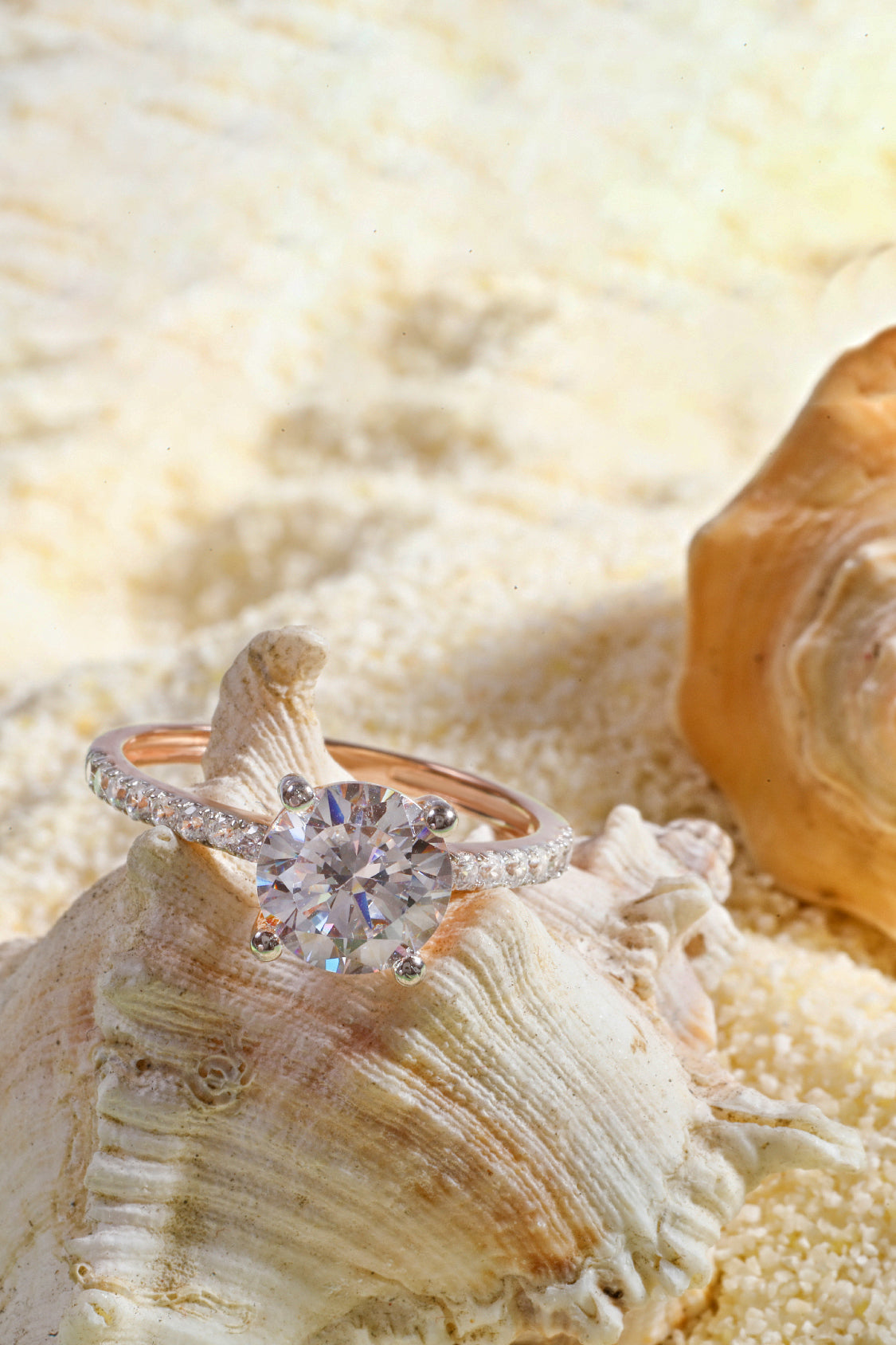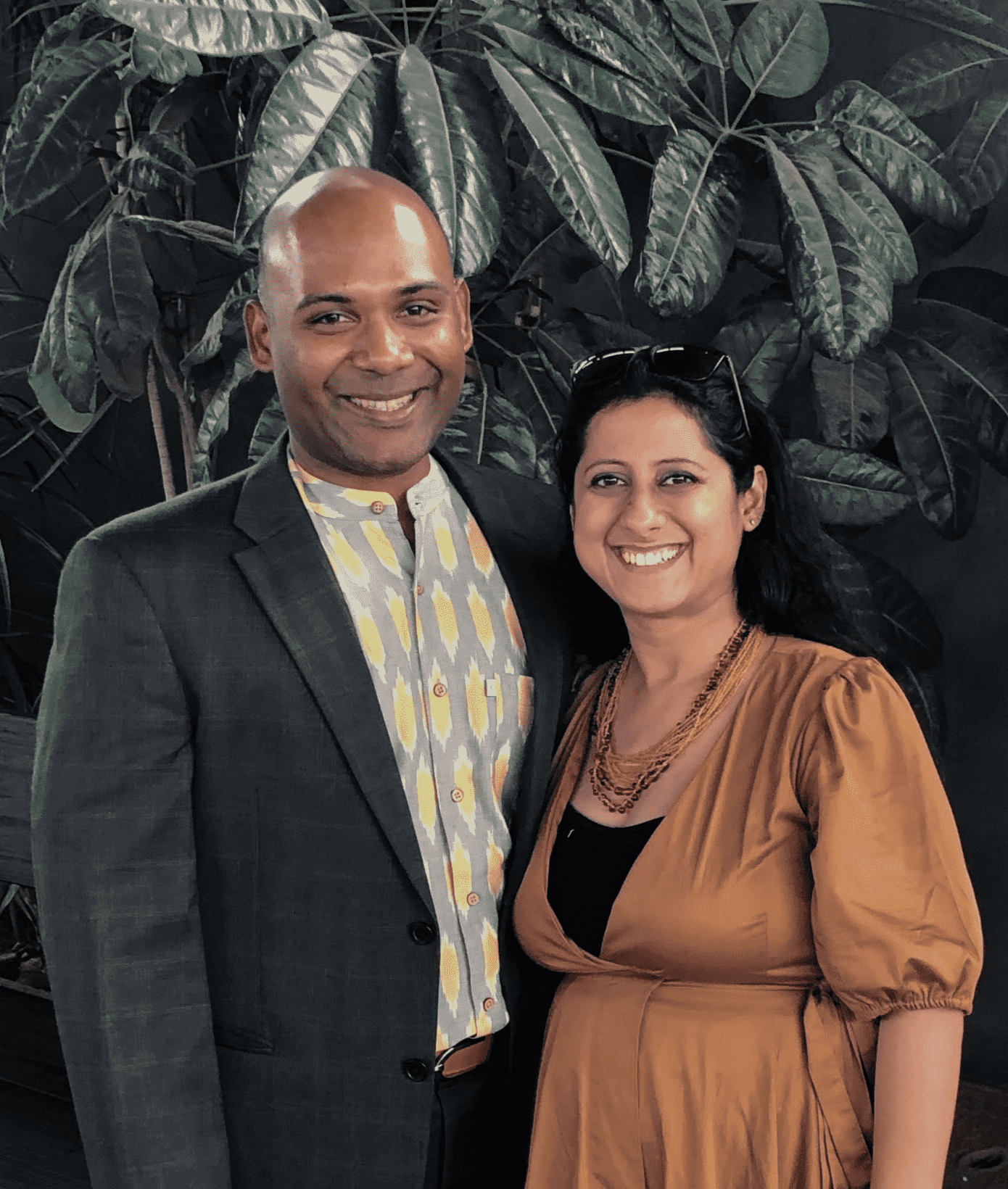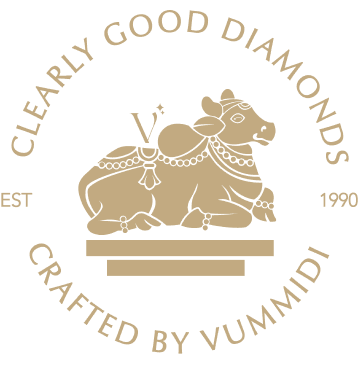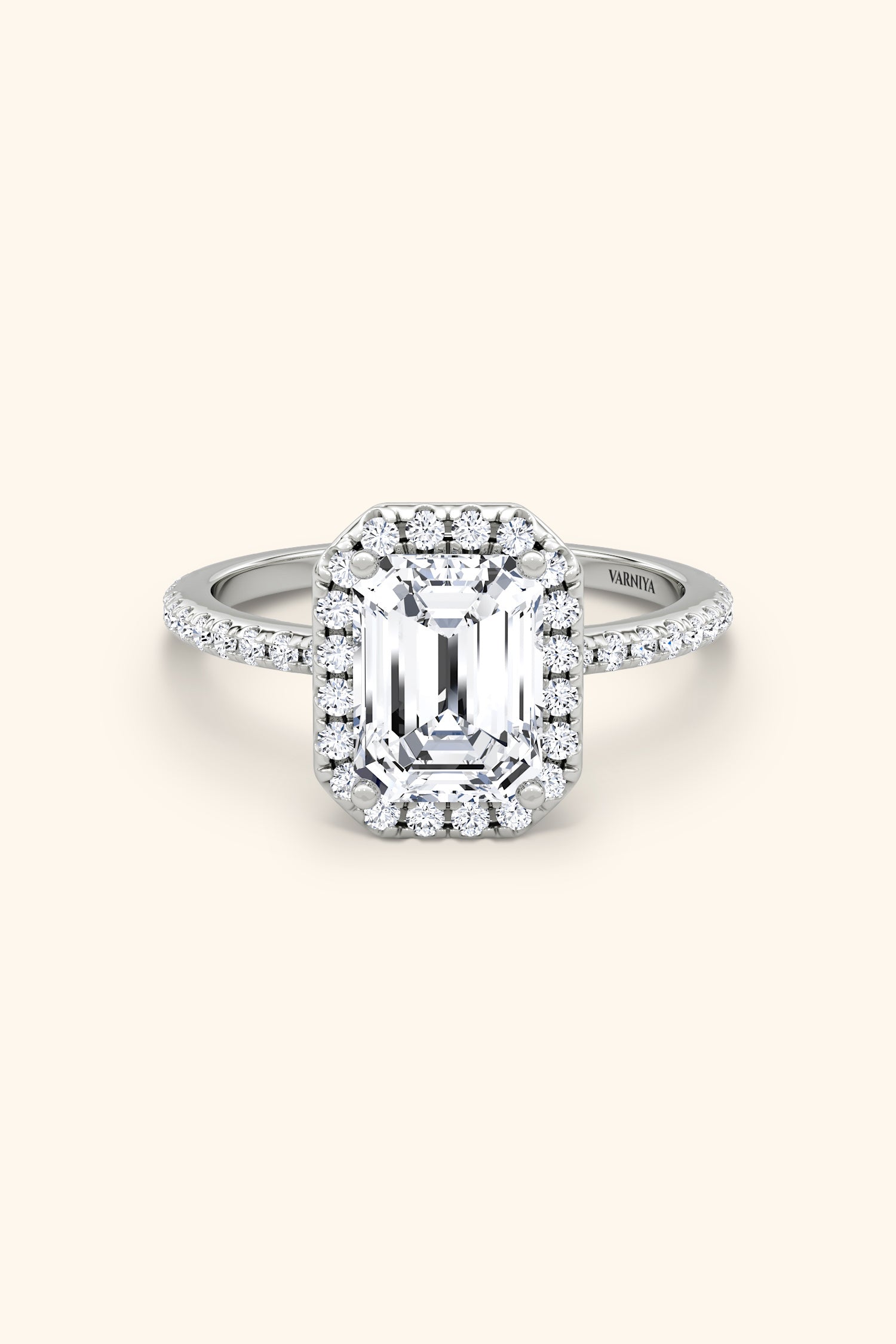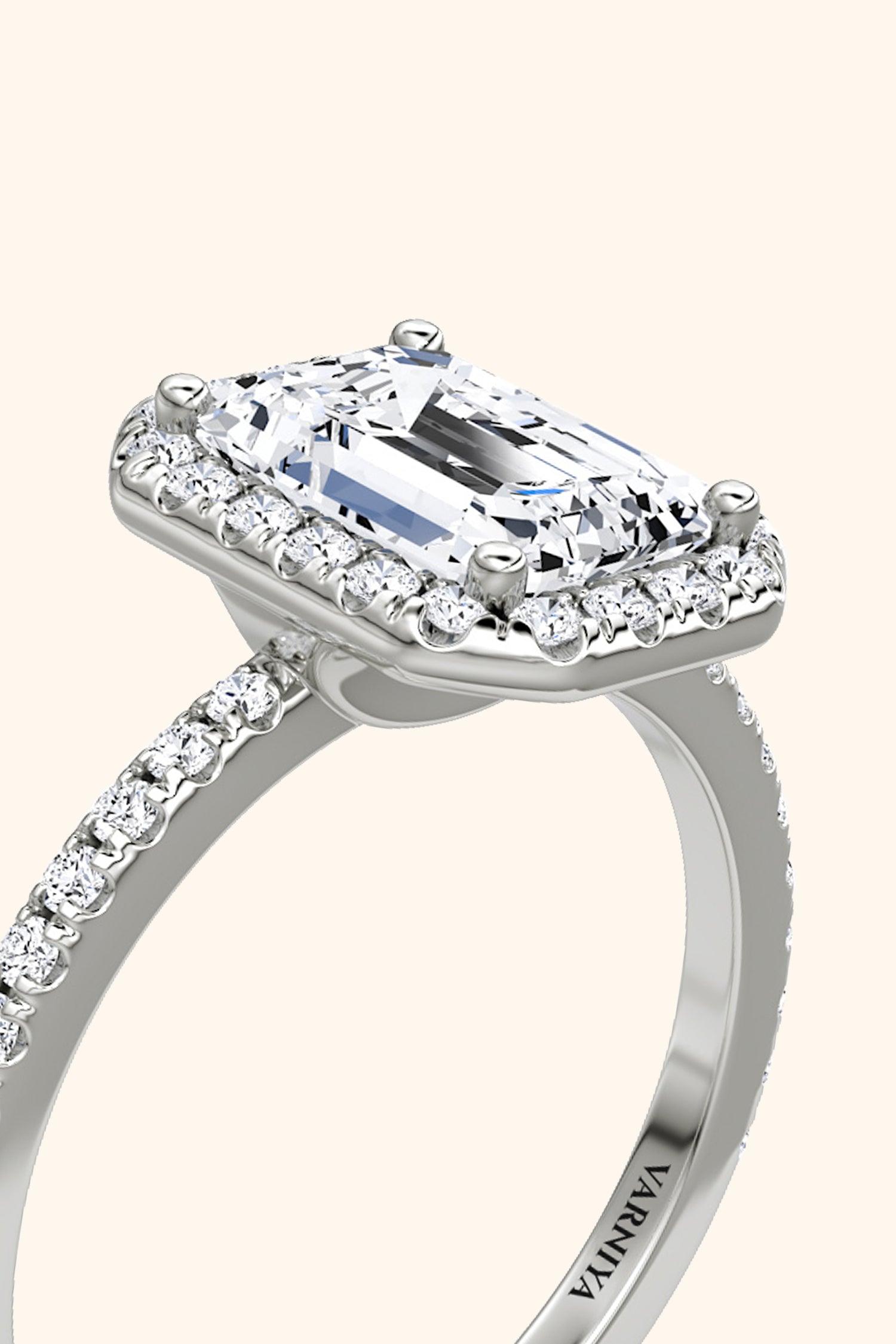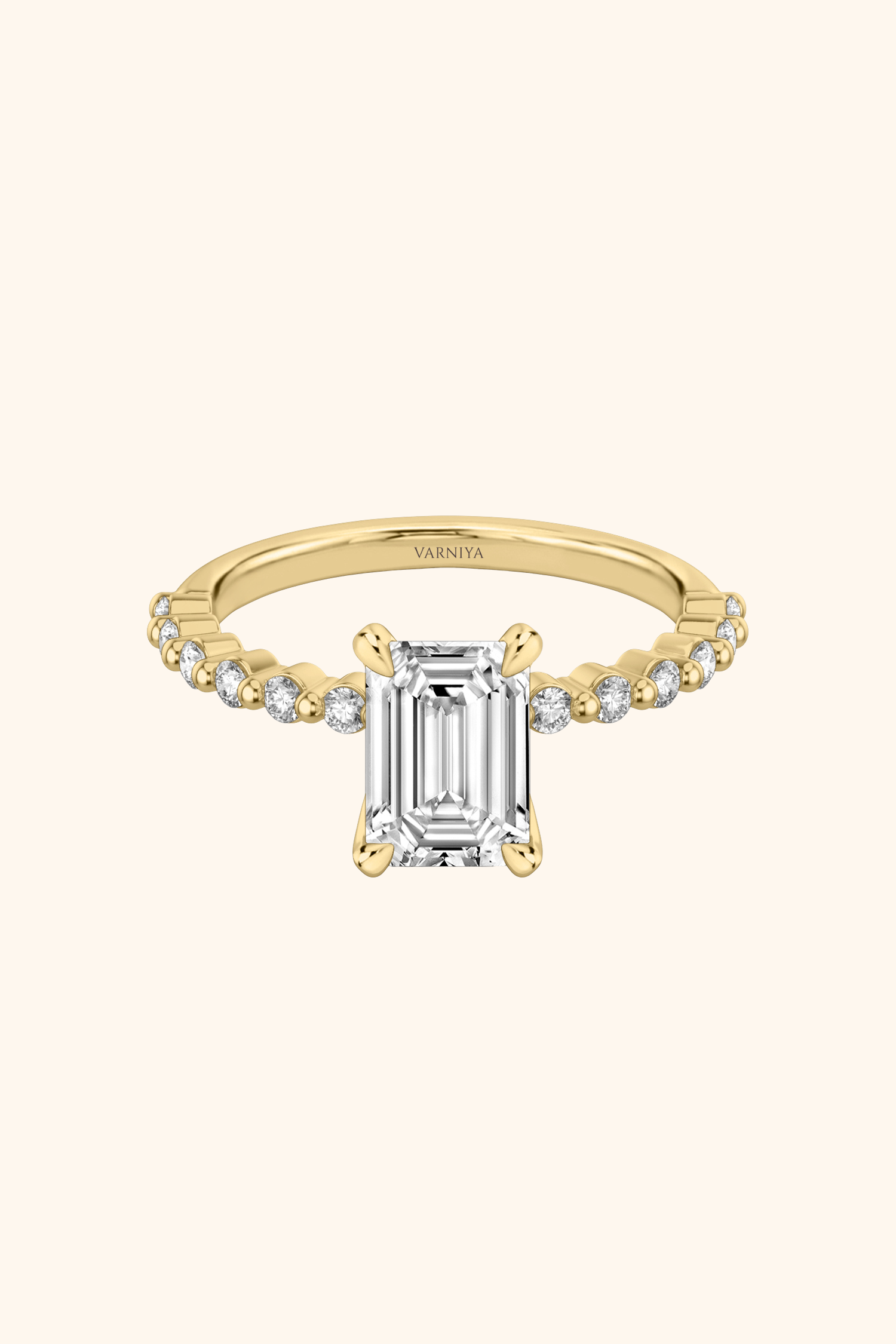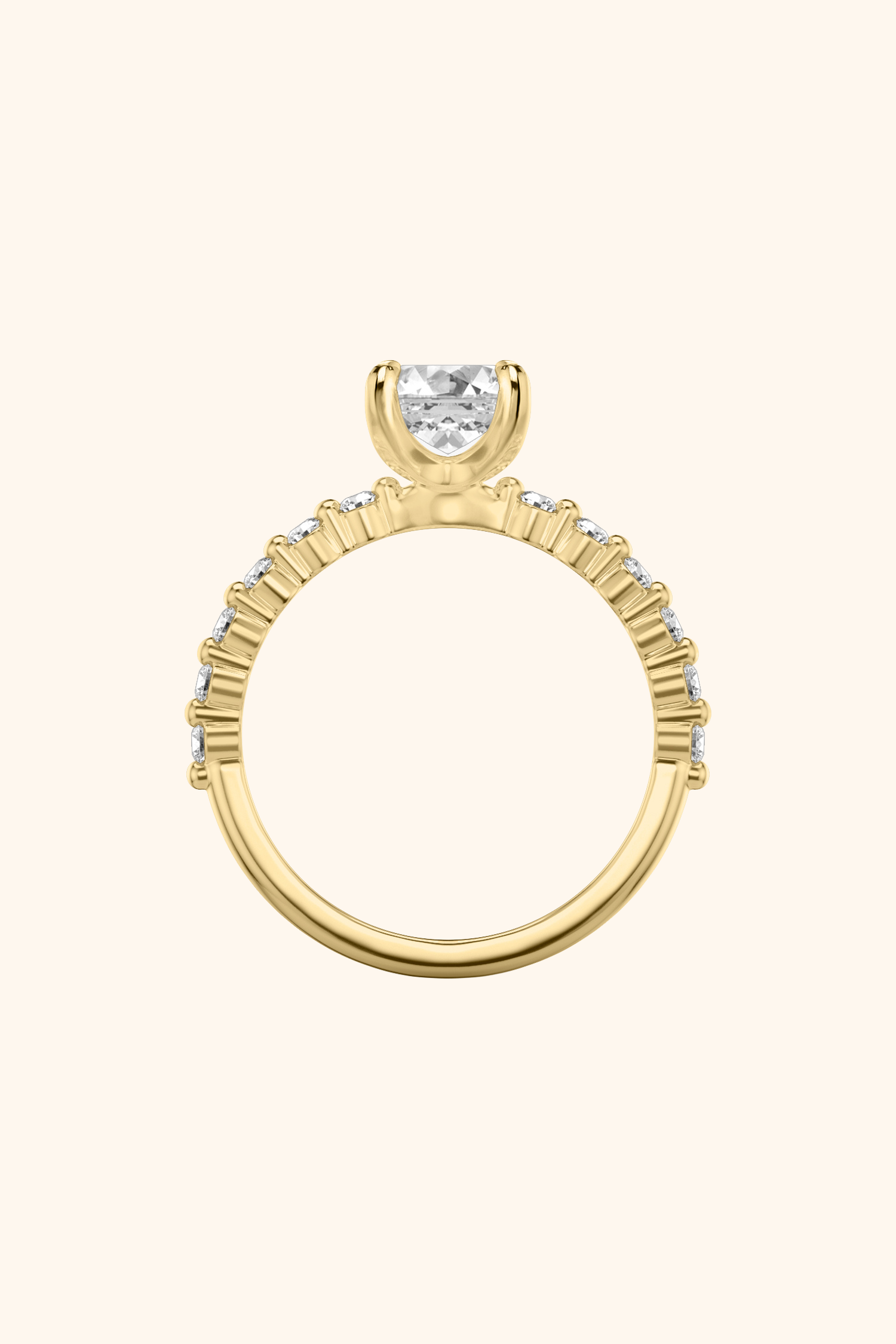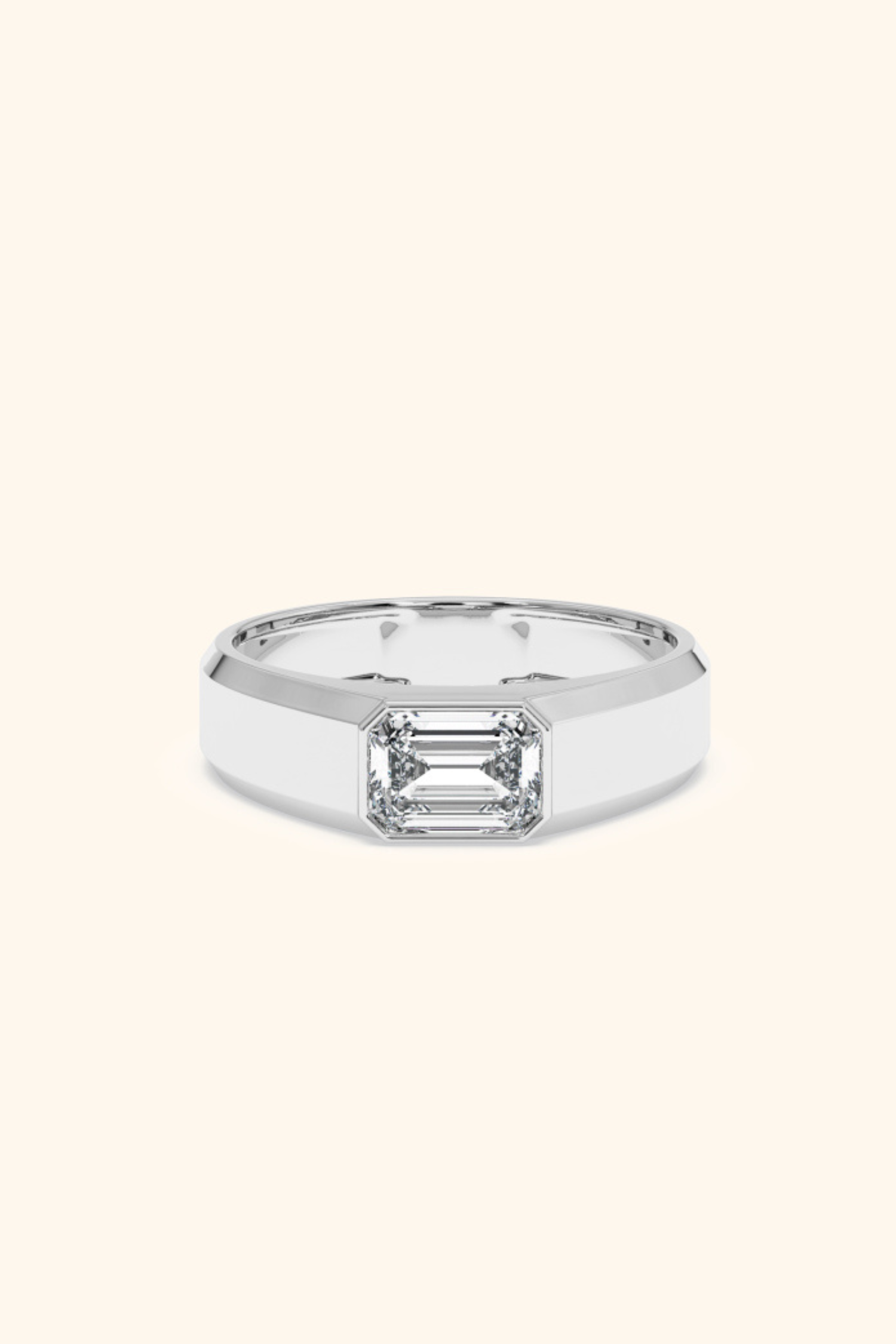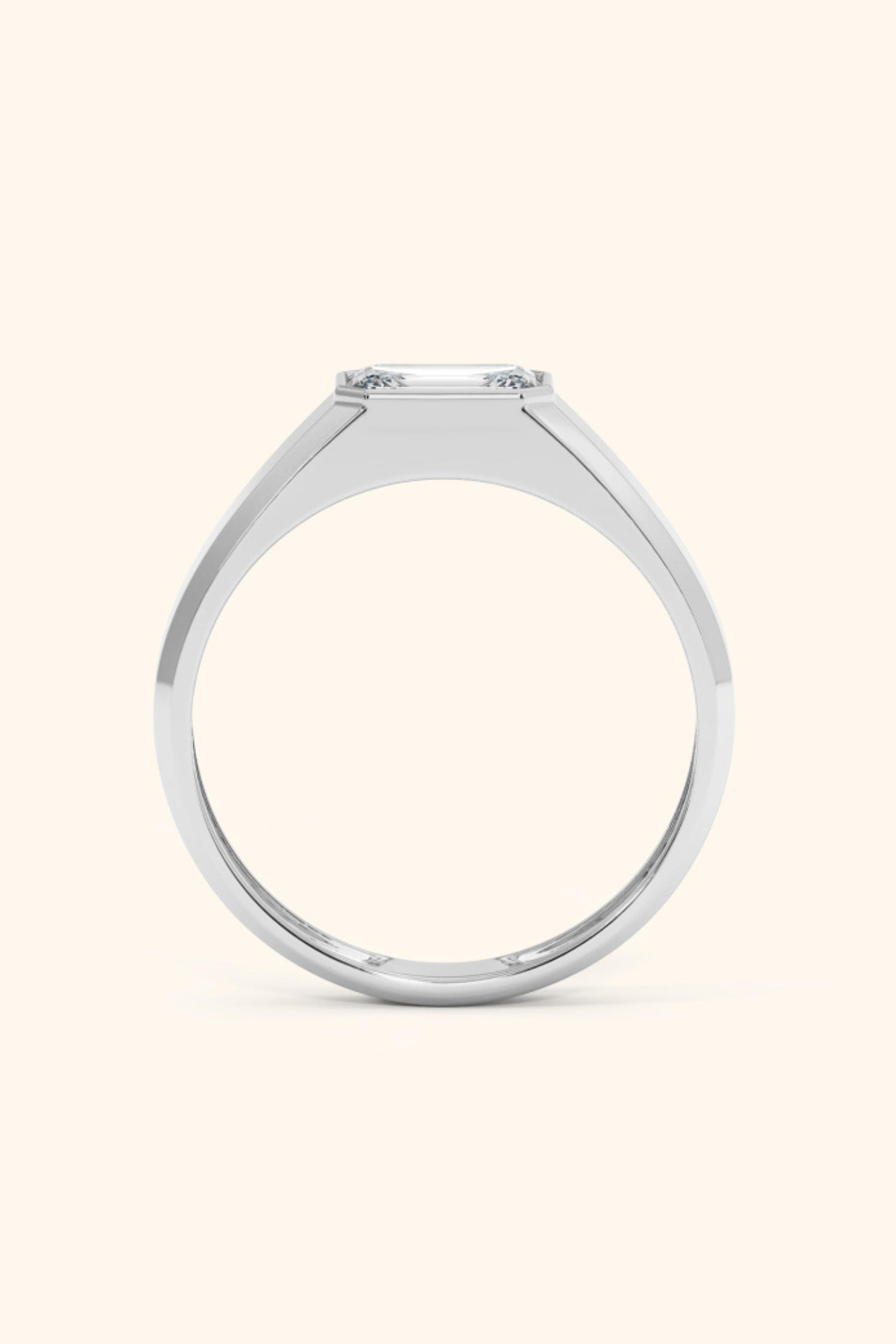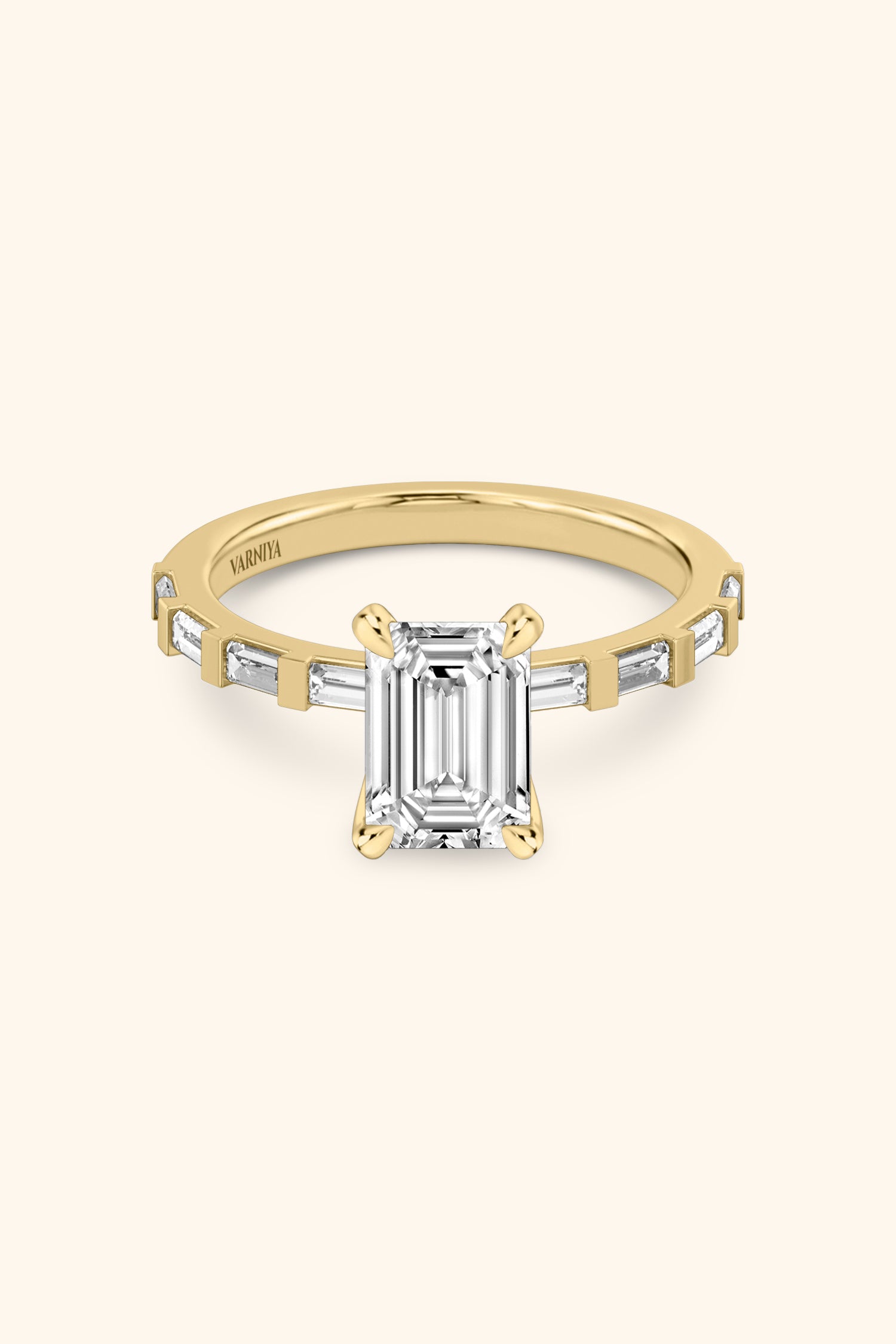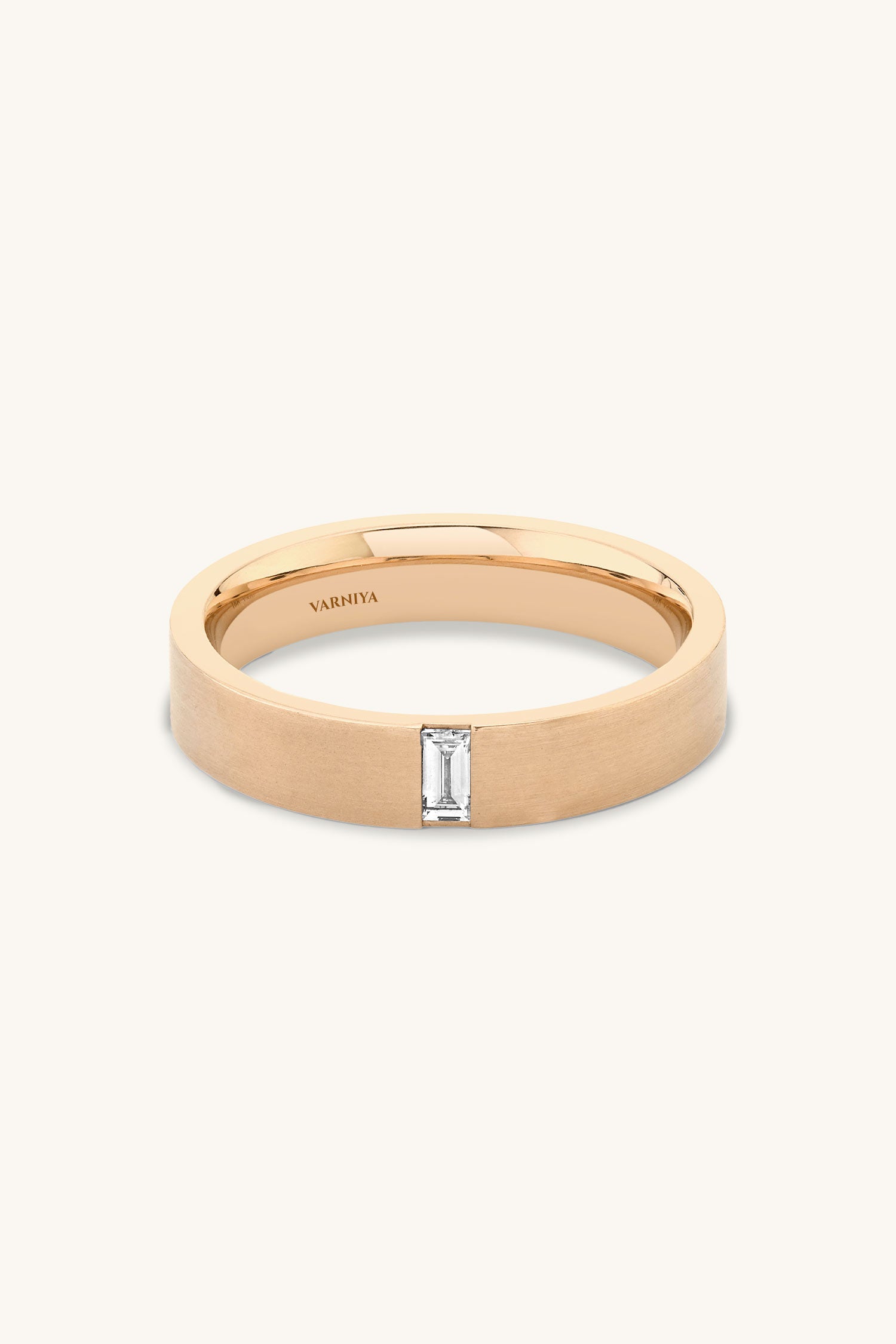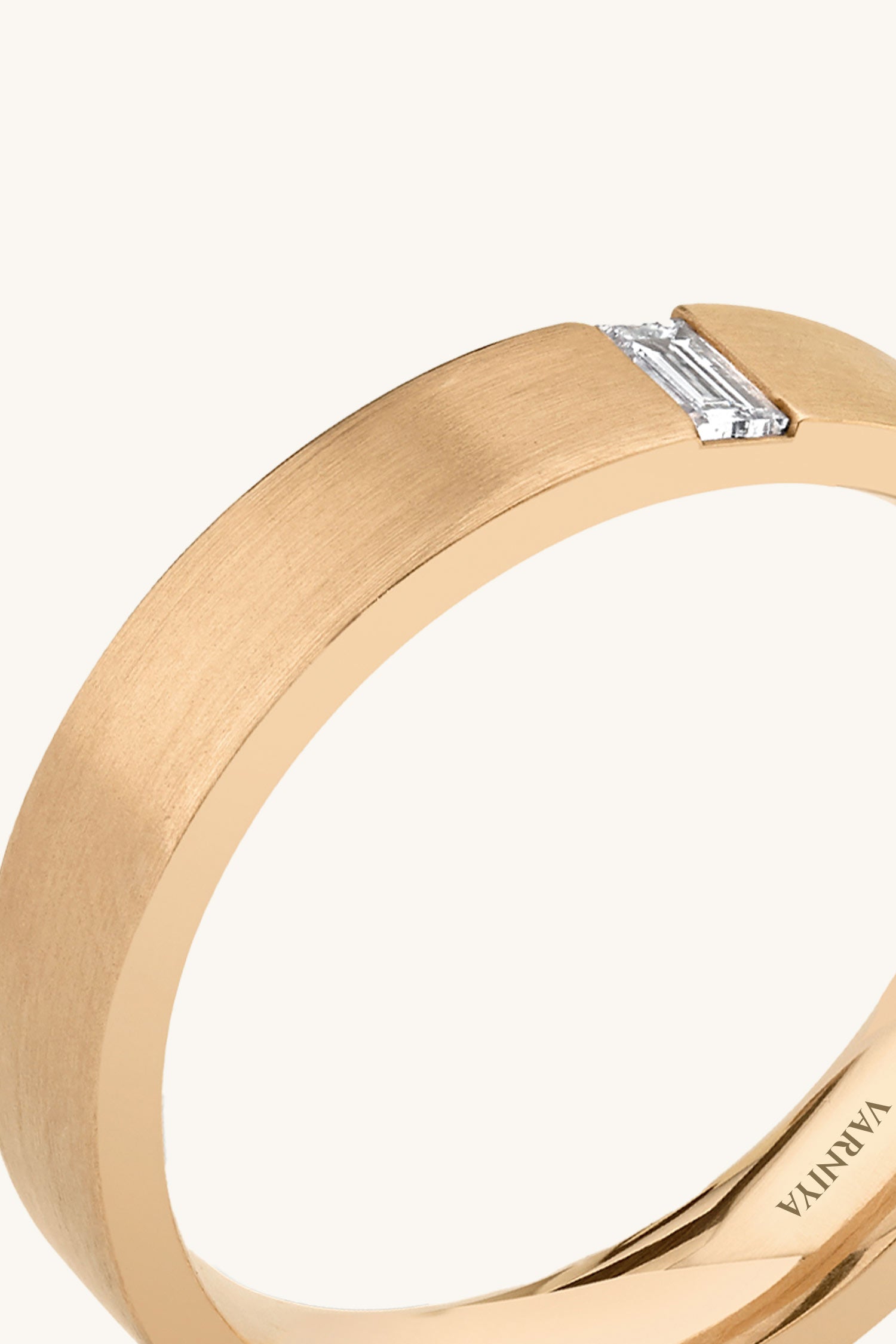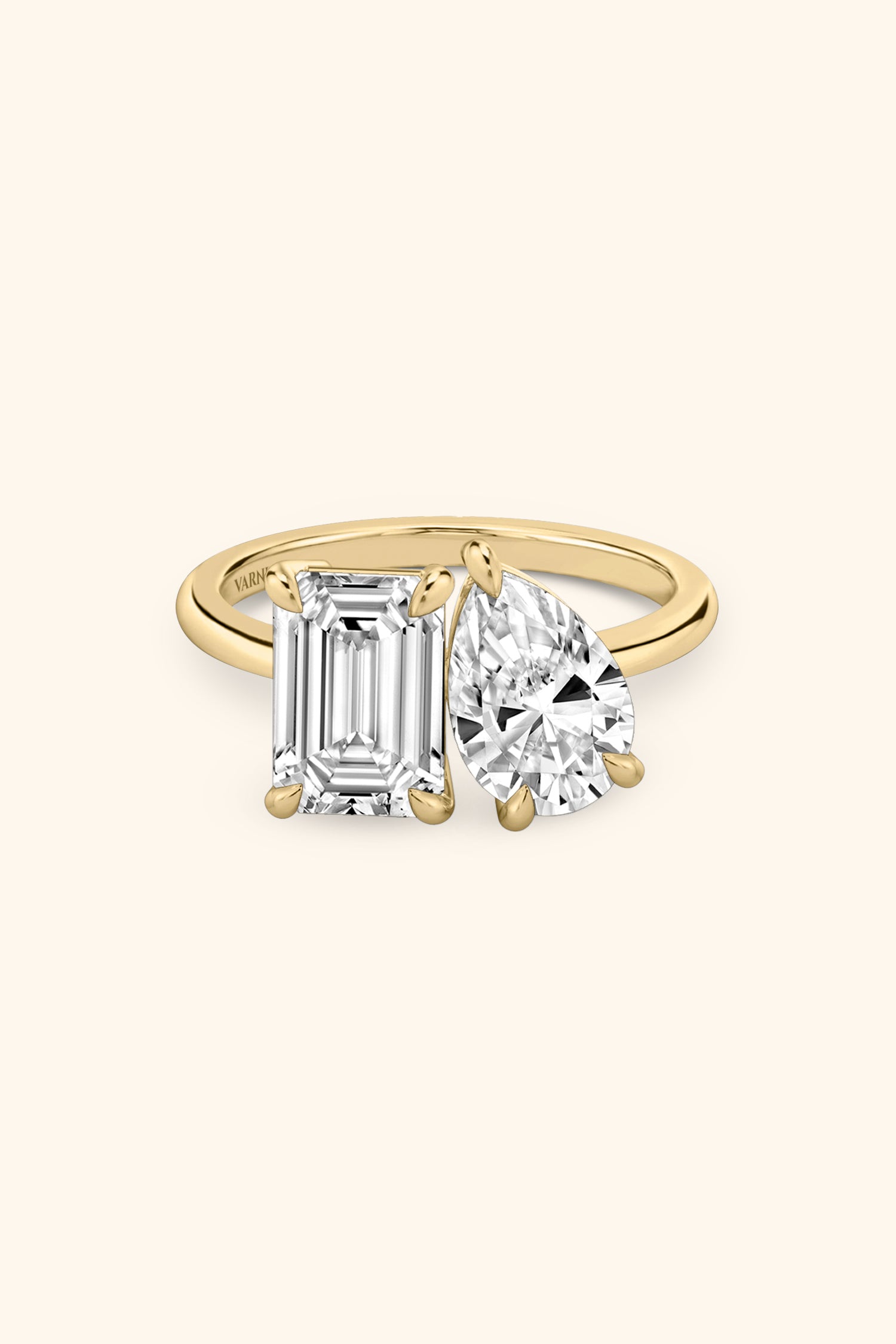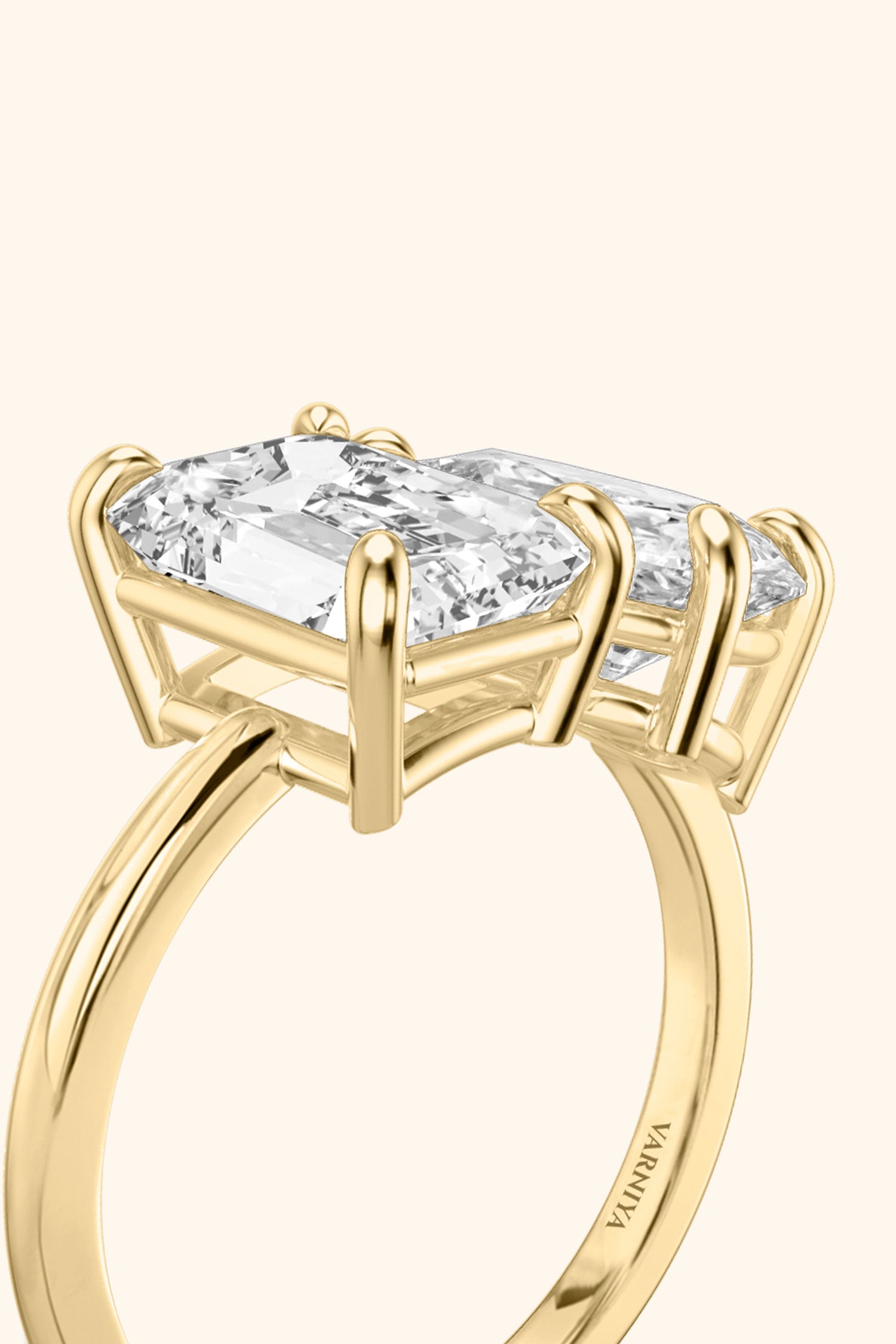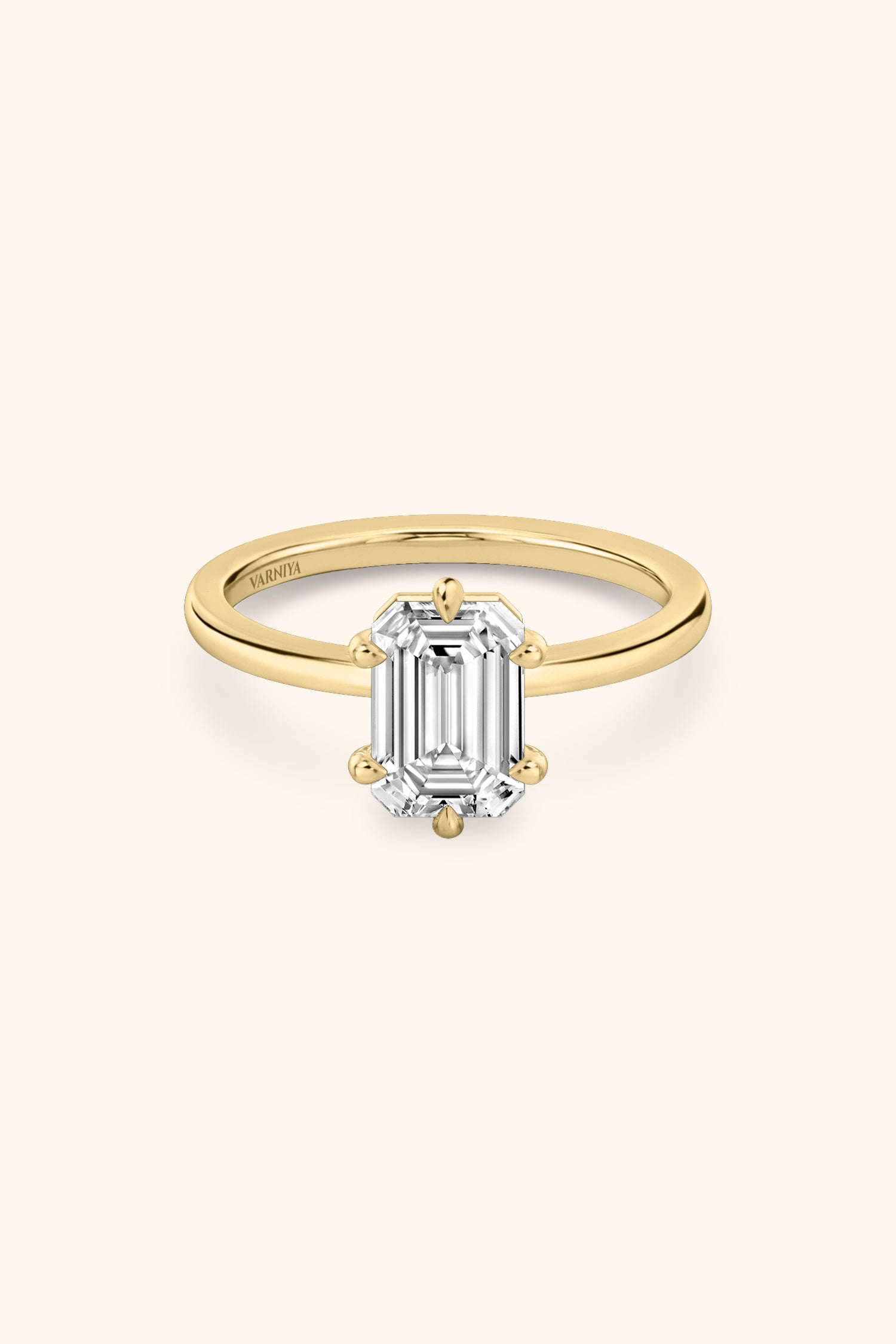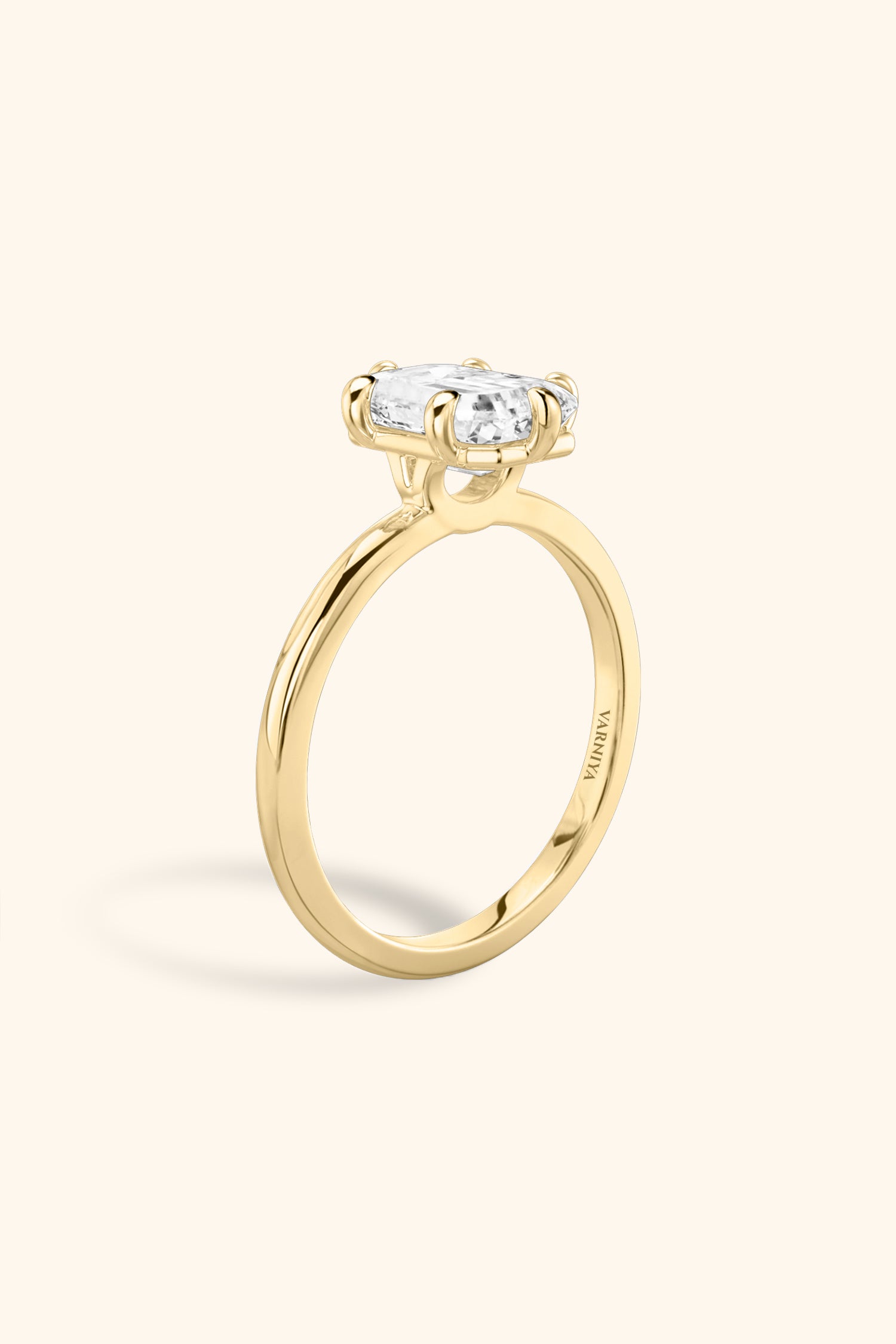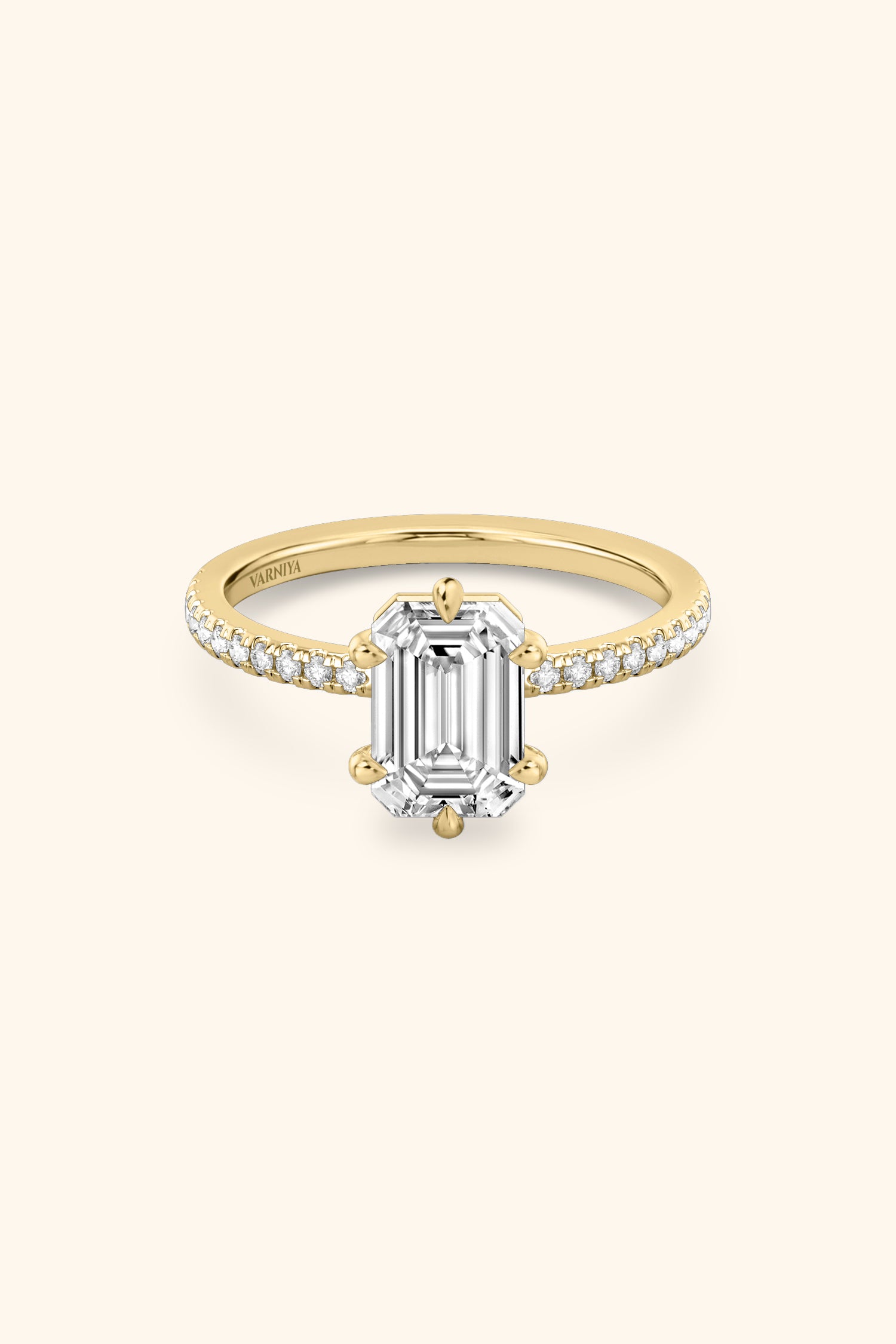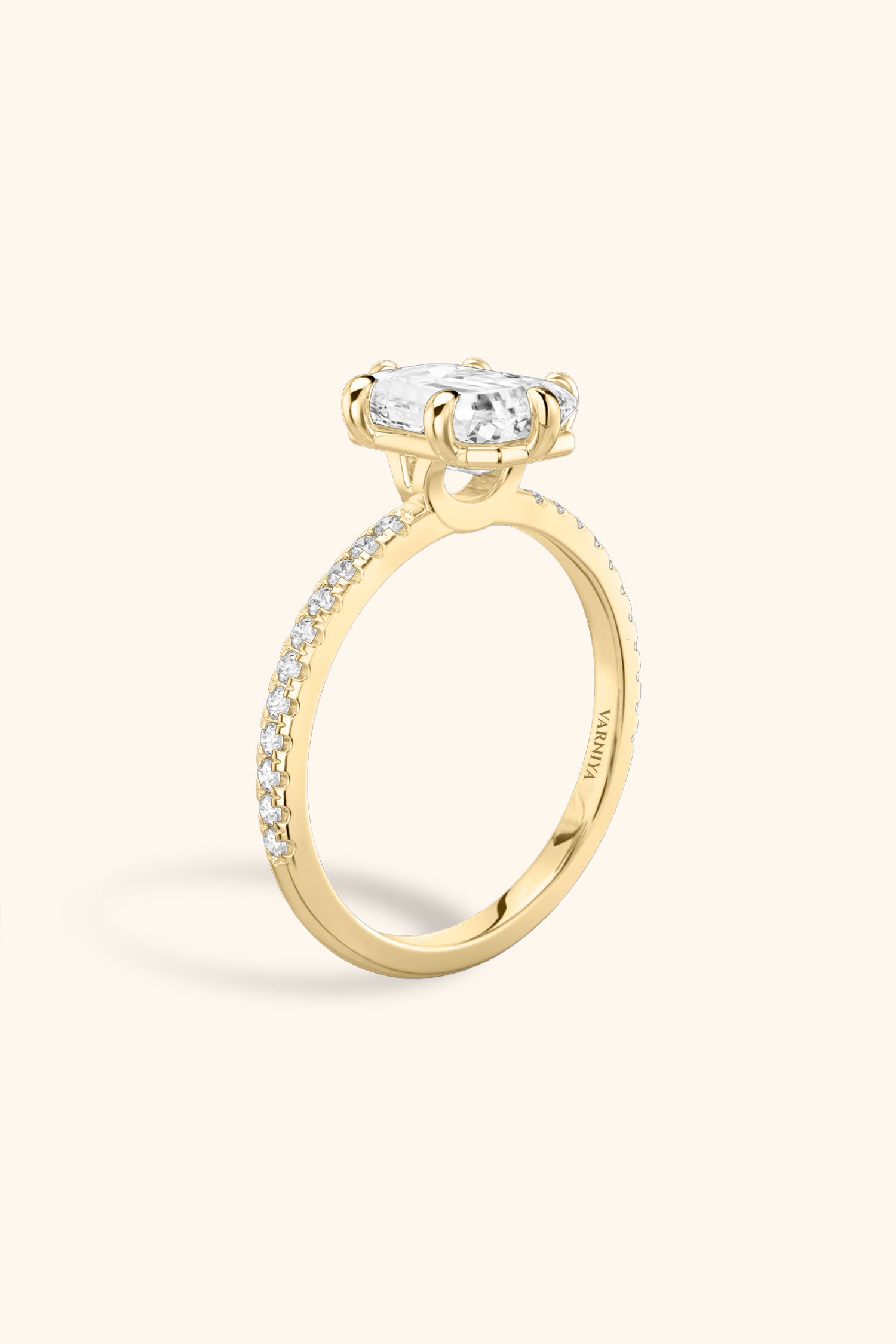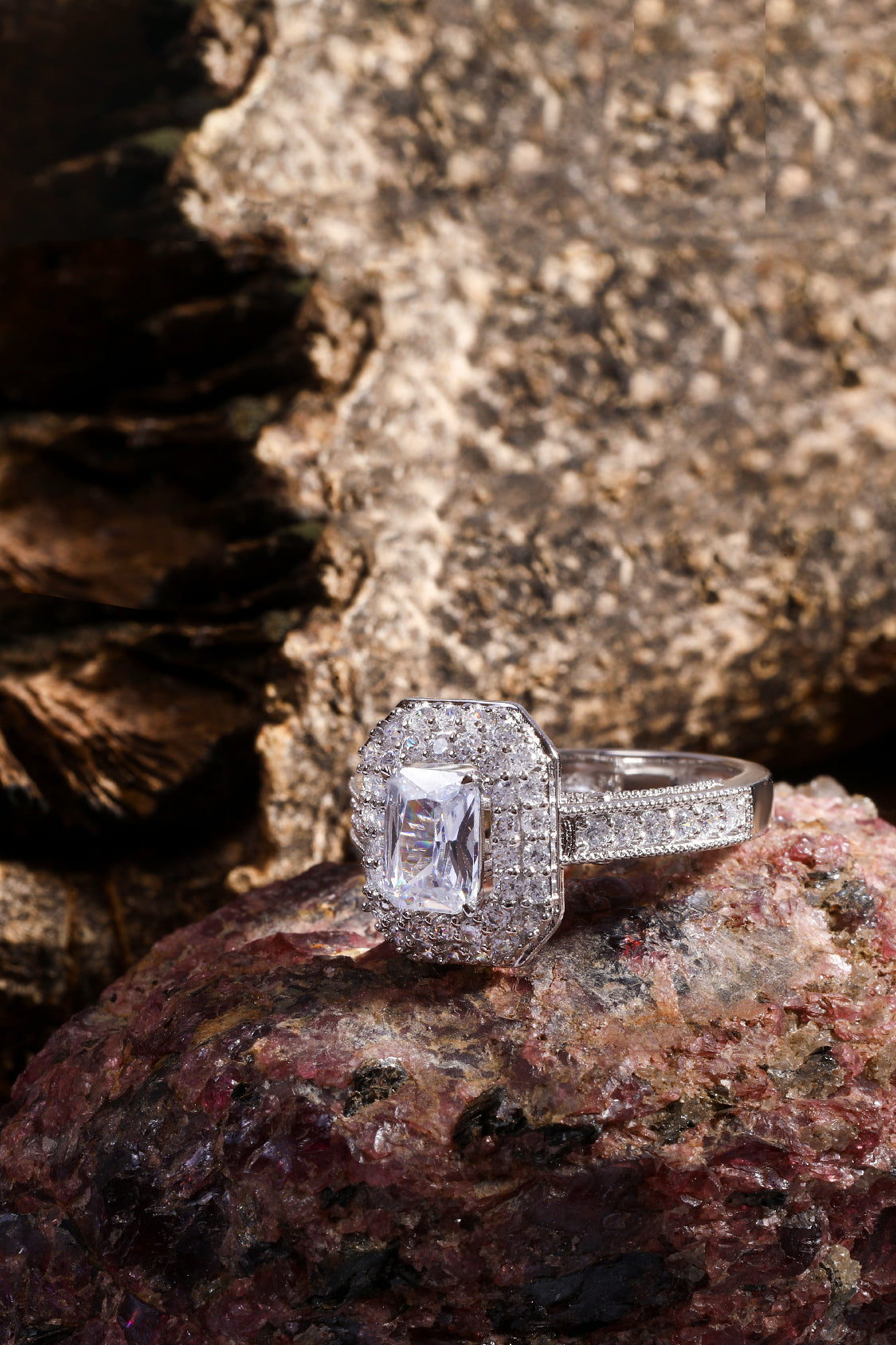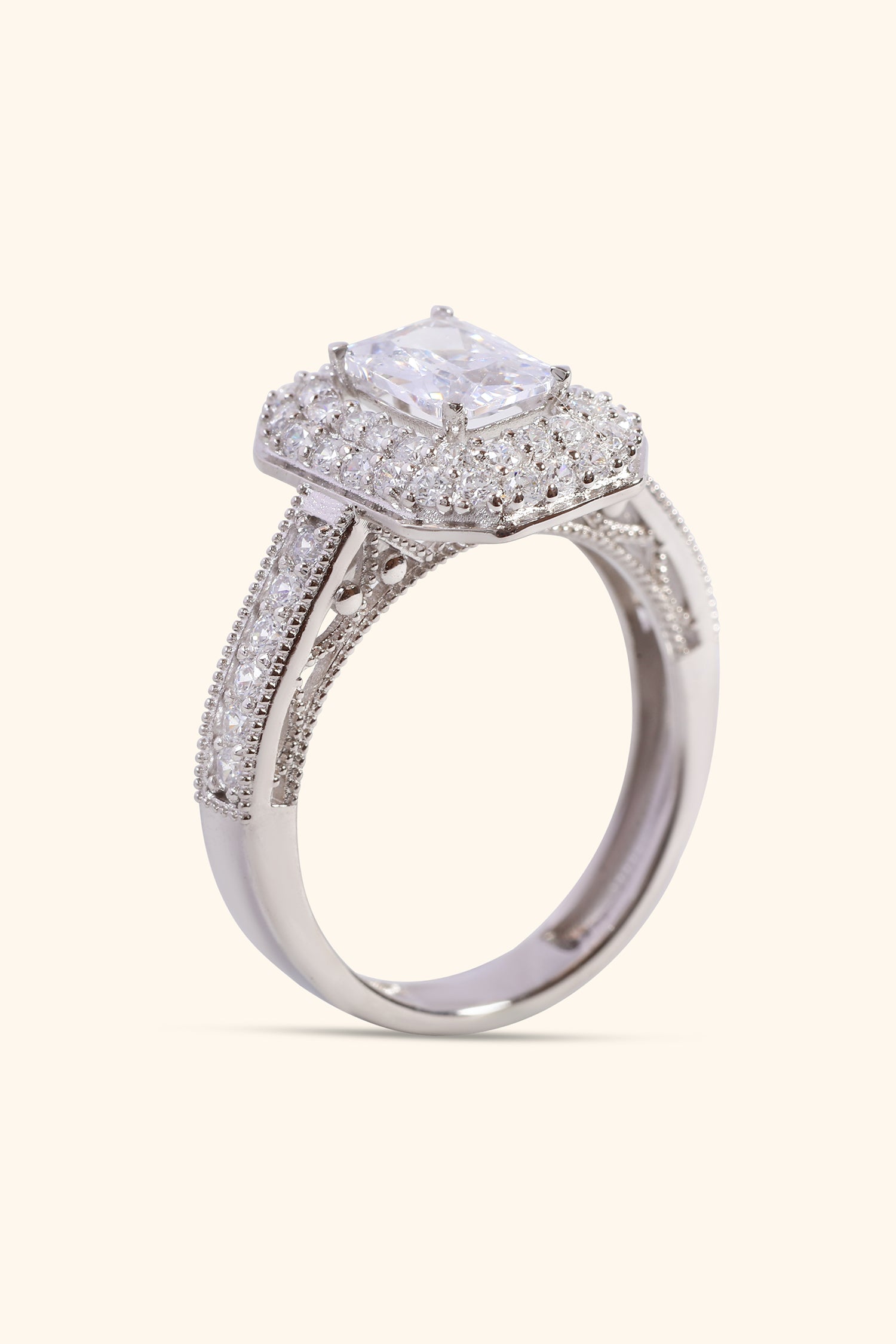How to Choose the Perfect Emerald Cut Lab Diamond Ring
Learn how to pick the right emerald cut lab diamond ring while avoiding common pricing traps. Smart, stylish, and wallet-friendly.
Looking for the perfect emerald cut lab diamond ring but don’t want to get scammed or overwhelmed? You’re not alone.
With lab grown diamonds now making up over 36% of global diamond jewelry sales (Statista, 2024), more buyers are getting smarter—and savvier.
This guide walks you through exactly what to look for, what to skip, and how to shop for a beautiful ring without breaking the bank (or your brain). Let’s help you buy smart, not stressed.
Why Emerald Cut Lab Diamond Rings Are the New Classic
Emerald cut lab diamond rings are trending—and for good reason. Their step cut design gives a clear, elegant look that never goes out of style. You get a large, flat surface that shows off the clarity and shape like no other.
Lab grown diamonds offer the same quality as mined diamonds but are a more ethical choice. Plus, they cost up to 40% less (Forbes, 2024).
Want brilliance, beauty, and a better price? This is your ring. Today’s shoppers want sustainable sparkle without guilt—and emerald cut lab rings deliver that perfect balance.
Understanding the Emerald Cut: Shape, Facets & Sparkle
Emerald diamonds are known for their unique shape and stunning step cut reflections. A lab grown emerald cut combines classic beauty with sustainable sourcing—ideal for modern buyers. Let's know more about it:
What Sets the Emerald Cut Apart from Other Shapes?
The emerald cut is unlike most diamond shapes. It doesn’t try to sparkle like a round or princess cut. Instead, it gives you something different—elegance, clarity, and a clean, bold shape.
You’ll notice long, flat lines called step cut facets that look like mirrors. These create a “hall of mirrors effect” when light hits the surface.
If you're looking at an emerald cut lab diamond ring, here’s what makes it stand out:
- Shape: Rectangular shape or square shape with cropped corners—modern and vintage at the same time.
- Facets: Fewer but longer facets show off the stone’s clarity.
- Sparkle: It offers flashy light reflections, not scattered sparkle.
- Clarity matters: Inclusions show up more easily, so go for a higher clarity grade.
- Size advantage: It looks bigger than a round diamond of the same carat weight.
That’s why many choose emerald cut lab grown diamonds—they deliver high quality, a timeless look, and better value without the price tag of mined diamonds. It's a bold, smart choice for buyers who appreciate clean lines and honest beauty.
Emerald Lab Grown vs. Natural vs. Mined Diamonds: What’s the Real Difference?
When buying emerald cut lab diamond engagement rings, you may wonder—should you go for lab grown, natural, or mined diamonds? Let’s break it down simply.
What Are They?
- Lab grown diamonds are made in a lab using heat and pressure. Every lab created diamond undergoes a process that mimics nature—minus the mining and heavy environmental cost.
- Natural diamonds are formed deep underground over billions of years.
- Mined diamonds are natural diamonds taken out from the earth through mining.
All three are real diamonds, with the same cut, clarity, color, and sparkle.
Key Differences That Matter:
- Price: Lab grown diamonds cost 40–60% less than mined diamonds (Forbes, 2024).
- Ethical Choice: Lab diamonds are more sustainable and don’t require destructive mining.
- Clarity & Quality: You can get higher quality and fewer inclusions for less in lab options.
- Certification: Both lab and mined diamonds can be graded by the International Gemological Institute (IGI).
Choosing a grown emerald cut diamond means fewer environmental concerns and more options for customization.
The 4Cs in Emerald Cut Diamonds: What to Prioritize
When buying an emerald cut lab diamond ring, not all diamonds are created equal to the same standards . You need to understand the 4Cs—clarity, cut, color, and carat—especially for emerald cuts. Here's what really matters:
- Clarity Is King in Emerald Cuts: Emerald cut diamonds have open, flat facets. These show every tiny flaw, also called inclusions. That’s why clarity is more important here than in other diamond shapes. Choose VS1 or better for a clean look to the naked eye.
- Cut Impacts Sparkle—Even Without Fireworks: Emerald cuts don’t sparkle like brilliant cuts. They reflect light in bold flashes—known as the hall of mirrors effect. A precise cut makes the ring shine in its own unique way. Look for symmetry and polish in your grading report.
- Color Shows More—Go for Near-Colorless or Better: Because of its step cut, color shows easily in emerald cuts. Even a small tint can be obvious. Choose diamonds graded G or higher on the color scale to keep it looking clean and bright.
- Carat Can Mislead—Focus on Spread, Not Just Weight: Emerald cuts have a bigger face-up shape, so they look larger per carat than round diamonds. Don’t overpay for extra carats. Go for quality and proper proportions.
Emerald Cut Lab Grown Diamond Certifications to Check
1. Always Look for Graded Certification: A certified diamond has been tested by experts. They grade its clarity, color, cut, and carat. You’ll know exactly what you’re paying for. No certificate? Walk away. You can’t trust the quality without it.
2. The International Gemological Institute (IGI) Leads in Lab Diamonds: IGI is a top name for lab grown diamond grading. It gives full reports and even checks for inclusions. Look for IGI if you want clear grading and authenticity backed by science.
3. GIA Also Certifies Lab Diamonds (But Check the Report Type): GIA now grades lab diamonds, too. But some reports are basic. Ask for the full GIA grading report, not just identification.
4. Check for Laser Inscription on the Girdle: The girdle is the thin edge around the diamond. Many labs laser-etch a small number there. That number should match the certification report. It helps prove the diamond is the one you bought.
Ring Settings That Make Emerald Cuts Shine
Picking the right setting can change how your emerald cut lab diamond ring looks and feels. Since emerald cuts have long, clean lines and big open facets, the setting matters more than you think. Let’s walk through the top five.
- Solitaire: Simple and timeless. A solitaire setting puts all the focus on your emerald cut diamond. Great for showing off the clarity and sharp shape of the stone. Ideal if you want a clean and modern look.
- Halo Setting: Want more sparkle? A halo surrounds your center stone with tiny diamonds. It makes your diamond look bigger and adds brilliance from every angle. Works well if you like a more eye-catching style.
- Three-Stone: Symbolic and bold. This setting features one center emerald cut diamond with two smaller side stones. It stands for your past, present, and future. Adds width and makes the center stone pop.
- Bezel Setting: Need something secure? A bezel wraps the diamond with metal for strong protection. Perfect for active lifestyles or daily wear. It adds a sleek, modern edge while keeping the lab grown diamond safe.
- Custom Settings: Want something truly yours? Go custom. You can create a ring that matches your story, budget, and style. Some shoppers even mix metals or use side stones with special meaning. Want to add personal meaning? Some choose to engrave initials or a heart symbol inside the ring band
Shop the Perfect Emerald Cut Lab Diamond Engagement Rings - Varniya
If you’re looking for a ring that’s equal parts elegant, ethical, and expertly crafted, Varniya is worth your attention.
Known for its certified lab grown diamond jewelry, Varniya offers a refreshing alternative to mined diamonds—without cutting corners on quality or design. Their rings are thoughtfully created to match both modern tastes and timeless traditions.
Top Picks: At Varniya, the engagement ring collection blends certified lab grown diamonds with fine craftsmanship. Standout rings include:
- 6 Prong Classic Grace with Emerald Solitaire Pavé Ring – A modern update to a classic, full of sparkle and structure.
- Luminosa Emerald and Pear Solitaire Ring – Unique dual stone pairing that adds meaning and shape contrast.
- Angelica Emerald Solitaire Pavé Ring with a Classic Halo – Adds brilliance with a full halo and sleek band.
- French Bar Embellished with an Emerald Solitaire – A refined ring that pairs bold facets with delicate metalwork.
These designs are perfect for someone looking to balance beauty, comfort, and a bit of personal flair.
Custom Options: Want to create something unique? Varniya offers made-to-order rings. Choose your shape, metal, and even settings. It's easy and tailored to you.
Price Range: Expect prices starting around ₹60,000 and going up depending on carat, quality, and design. Lab grown options let you go bigger without overspending.
Shipping, Returns & Delivery Timelines:
- Free shipping across India
- Easy return and exchange within 7 days
- Delivery in 8–12 business days
Website: Shop directly at:
🔗 www.varniya.com → Explore emerald cut engagement rings now
Common Pricing Traps for Emerald Cut Diamonds (and How to Avoid Them)
1. Overpaying for Carat Weight Instead of Visible Size
Emerald cuts are known for their large table (top view), so they look bigger than other shapes at the same carat. But many buyers still pay more just to boost carat weight.
What to do instead:
- Focus on the face-up size, not just the number on the certificate.
- Compare millimeter dimensions before you buy.
- A well-cut 0.90 carat can look like a 1 carat—saving you a lot on price.
2. Ignoring the Cut Quality—Even Though It Impacts Everything
Emerald cuts don’t have the same kind of sparkle as round diamonds. Instead, they show clarity, shape, and facets in a unique “hall of mirrors effect.” But if the cut is off, the diamond can look dull.
What to do instead:
- Look for diamonds graded “excellent” or “very good” for cut and polish.
- Ask to see how the diamond looks under light.
- Avoid stones with poor symmetry or uneven step cut facets.
3. Buying Without Certification from Trusted Labs
A cheap deal with no proof? That’s a red flag. If there’s no certification, you might be paying for lower quality than you think, and flaws may be visible to the naked eye .
What to do instead:
- Always choose diamonds graded by the International Gemological Institute or GIA.
- Ask for a full report showing details like clarity, color, and inclusions.
- Look for a laser inscription on the girdle to match the stone to the report.
- Ensuring the diamond comes with a verified certificate protects you from hidden flaws and overpaying
4. Falling for Cheap Lab Diamonds with Visible Inclusions
Some lab grown diamonds are priced super low. Sounds great, right? Not always. Many of these stones have visible inclusions—small flaws you can spot with the naked eye, especially in a g si1 clarity. In an emerald cut lab diamond ring, that’s a big deal.
Because of the wide facets and flat surface, flaws show up more clearly than in other shapes.
What to do instead:
- Always check the clarity grade (VS1 or better is ideal).
- Ask to view the diamond in person or request high-res images.
- Avoid “eye-visible” flaws even if the price looks tempting.
5. Not Factoring in the Setting Price
You found the perfect stone, and it fits your budget—but then the setting almost doubles the cost. Many buyers forget that settings can vary in price depending on metal type, style, and customization.
What to do instead:
- Get a full quote that includes both the diamond and the setting.
- Compare prices for solitaire, halo, and three-stone settings.
- If you want to create a custom ring, ask upfront about design fees and delivery timelines.
6. Skipping Return or Exchange Policies
Big purchase. No backup plan? That’s risky. Some stores don’t offer clear return or exchange options—especially for custom rings. If the diamond doesn’t match the certificate or isn’t what you expected, you might be stuck.
What to do instead:
- Read the store’s return policy in full before you buy.
- Ask how long you have to return or exchange.
- Check if certification details match the actual diamond received.
Choosing the right emerald cut lab diamond ring doesn’t have to be complicated. When you know what to check—clarity, cut, certification, and precision in setting—you avoid costly mistakes and get real value. Lab grown diamonds give you the same beauty as mined diamonds, minus the guilt and extra cost. Stay sharp, shop smart, and always buy from trusted sellers like Varniya. You deserve a ring that shines for all the right reasons.


